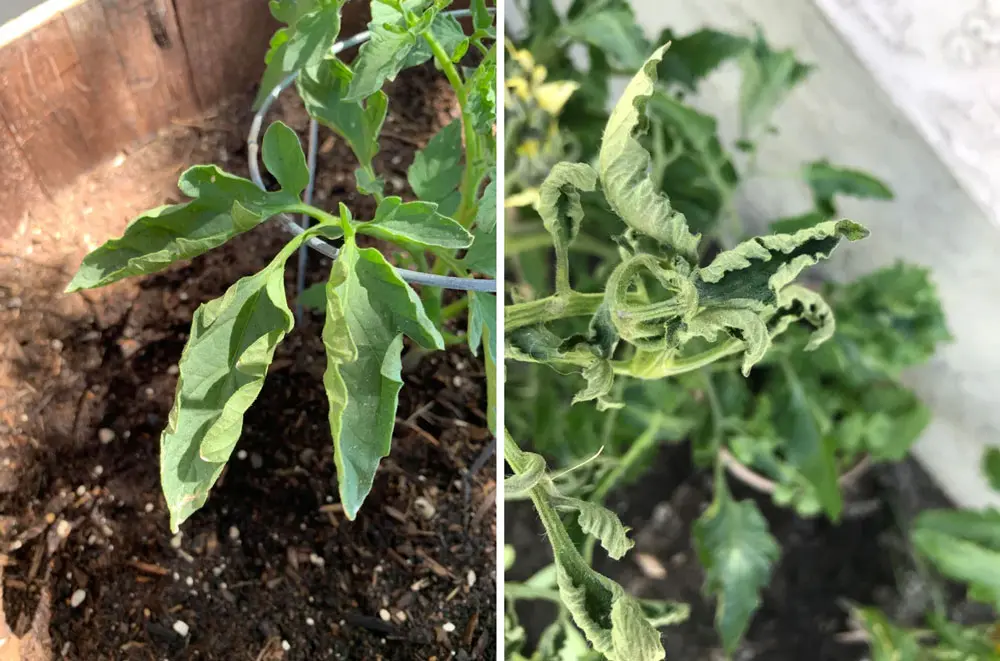Unravel the mystery of curling barberry leaves and revive your plants lush beauty with expert care tips.
Why Are Your Barberry Plant Leaves Curling?
Opening with an eye-catching title this article will explain in simple terms and clear details why your barberry plant leaves may be curling. Using bullet points and examples where possible I will concisely cover the main causes and solutions in an easy-to-read format.
Barberry shrubs are prized for their colorful foliage, but curling leaves are a sign of stress. Here are the most common reasons barberry leaves curl and what you can do
- Temperature Extremes
Too much heat or cold can shock barberry plants, causing leaves to distort. Scorching sun fries leaves, while frigid weather makes them curl tightly inward trying to conserve warmth. Protect plants from temperature swings. Move pots out of direct sun in summer or cover in winter.
- Underwatering
Barberries need consistent moisture. If soil dries out, leaves will curl to reduce water loss. Water thoroughly at base weekly in dry weather. Add mulch to retain moisture. Consider irrigation for large plantings.
- Pests
Insects like spider mites, aphids and thrips suck sap from leaves, causing curling and cupping. Treat ASAP with horticultural oil or insecticidal soap sprays. Isolate infested plants to prevent spreading.
- Diseases
Fungal infections like powdery mildew and leaf spot can distort barberry foliage. Prune out affected areas. Improve airflow and avoid overhead watering. Apply organic fungicides if severe.
- Root Problems
Restricted roots from girdling, container bounds or damage can reduce water and nutrient uptake, curling leaves. For potted plants, shift to a larger container. Check roots and prune any circled or injured ones before replanting at proper depth.
- Nutrient Imbalance
Low nitrogen causes overall yellowing. Lack of iron, manganese or zinc turns leaves pale between veins. Curling indicates deficiency. Have soil tested and amend accordingly. Apply balanced fertilizer in spring following label rates.
- Compacted Soil
Dense, oxygen-deprived soil impedes root function, dehydrating leaves. Loosen soil around plants, add compost and mulch. Limit foot traffic near barberries. Repot container plants in fresh potting mix.
- Pruning Stress
Excessive pruning just before or during hot, dry periods stresses plants. Time pruning for early spring or fall. Remove no more than 30% at one time. Make cuts just above buds or branches.
- Transplant Shock
Root damage from repotting/transplanting reduces water uptake. Minimize shock by moving plants in cool weather. Prune only damaged roots. Water well and shade for 1-2 weeks until established.
By identifying the trigger early and taking corrective care, you can get your barberry leaves back to their normal, healthy state. Pay close attention for signs of stress and address issues promptly. With proper growing conditions, your barberry will thrive for years with vibrant foliage.

Spotting the Signs: When Your Barberry Needs Help
Leaf curling in Wintergreen Barberry isnt just a phase—its a red flag. Look for leaves that are more than gently curved; if theyre tightly coiled or look like theyre under duress, your plant is signaling for help. Crispy edges or a change in color accompany this SOS.
Diseases That Make Leaves Curl
Fungal infections can also wreak havoc on your barberrys leaves. Anthracnose shows up as brown spots on leaves, while rust diseases display vibrant orange pustules, usually on the leaf undersides. Verticillium wilt is another serious concern, causing yellowing and dieback.
To combat these diseases, ensure your barberry is basking in full sun and has plenty of space for air to circulate. Pruning affected leaves and branches can help, and for severe cases, a targeted fungicide may be necessary. Remember, prevention is key—keep those gardening tools clean and handle roots with care.
Barberry Bush Care : Professional Gardening Tips
FAQ
How often should barberry be watered?
What does an overwatered barberry look like?
What do curling leaves indicate?
Why do leaves curl up & fold over?
There are many reasons why the leaves of plants curl up or fold over. Leaf curling and leaf folding are two of the most prevalent signs of plant problems. It is ideal for keeping the soil as moist as needed by the respective plant because many plants require a lot of water, and many plants don’t need lots of it. It depends on various factors.?
Why are my cactus leaves curling?
Fans and excess wind can cause unintentional harm to the plant. Overwatering can result in root rots, and that can become a reason for leaves curling. That is why it said that you should provide water to the plant when needed not when you want to.
Why are my peach leaves curling?
The deficiency of essential nutrients can cause any plant leaves to curl upward or downward. Peach Plants or Nectarine trees are among the plants which suffer from curl problems. Almost all the other plant leaves do the same as well, with the exception of a few. Most houseplants of garden plants are prone to curl diseases.
Why are my leaves curling?
Young curled leaves will eventually straighten as the leaf matures, however, leaf curl in mature leaves is generally a sign of altered environmental conditions. By identifying the causal factors for the leaves to curl you can effectively reverse the curling and restore the leaves to a healthy state. The curling or folding of leaves is an alarm.
